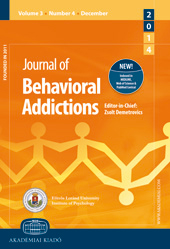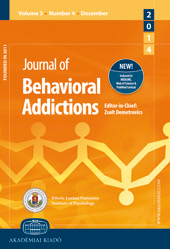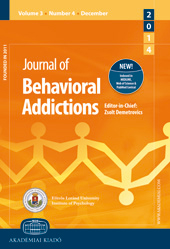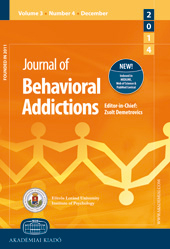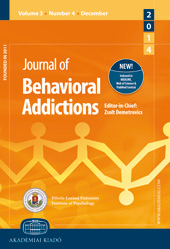
The Development of the Problematic Series Watching Scale (PSWS)
The goal of the present study was to create a short Problematic Series Watching Scale (PSWS). Methods: On the basis of the six components model of Griffiths (2005), six items were identified covering all components of problematic series watching. Confirmatory factor analyses were carried out on two independent samples (N1 = 366, N2 = 752). Results: The PSWS has appropriate factor structure and reliability. The amount of free time was not, but the series watching time was associated with PSWS scores. Women had higher scores than men. Discussion: Before PSWS, no prior scale has been created to measure problematic series watching. Further research is needed to properly assess its validity and reliability; and for examining whether extensive series watching can lead to health-related and psychosocial problems. Conclusions: In the increasingly digitalized world there are many motivational forces which encourage people watching online series. In the light of these changes, research on problematic series watching will be progressively relevant.
More...
